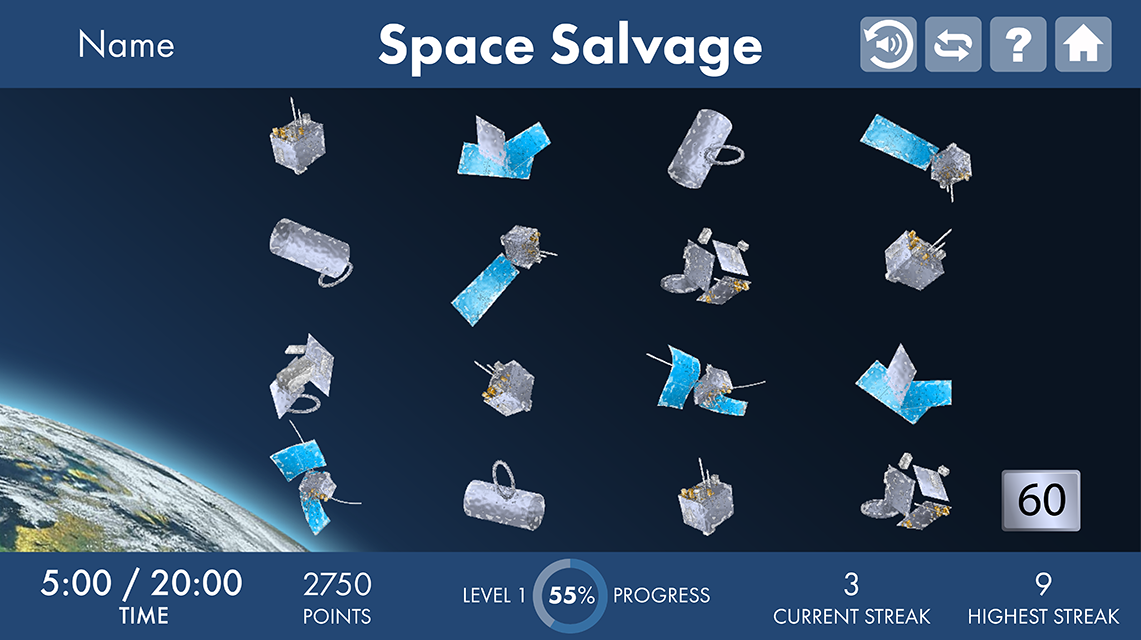As schools continue remote learning this fall, often in blended learning models, educators are turning to brain research for evidence-based teaching strategies.
This search for brain-based teaching tips is spurred by the urgency to address unfinished learning from an abbreviated spring semester due to school closures. The precipitous COVID slide is also not far from educators’ and parents’ minds.

Here are 3 tips, based on brain research, for teachers hoping to take their remote or blended teaching to the next level.
1. Less Is More
Time is not on our side, and there’s a lot to cover with your students. It’s tempting to cram as much as possible into a lesson. But remember: less is more.
If you give your students too much new information at once, they likely won’t remember all of it. Their working memory has limited capacity, and overwhelming it with too much knowledge results in cognitive overload.
What is working memory?
Working memory is the mental workspace that temporarily stores and manipulates information. Sometimes known as short-term memory, working memory is a key cognitive capacity for learning any subject.
For example, when reading a novel or textbook, your working memory holds onto what you read in the previous paragraph so you can make connections with the next one. When solving a math equation, you might keep a sum from one part of the problem in mind to divide it in the next step.
Every successful student and reader needs a strong working memory.
How much can working memory hold?
Research has shown that the cognitive load limit of our working memory is about 3-5 pieces of new information at once (more if you’re using memory tricks like clustering). How many new sight words or vocabulary do you usually teach at one time? If it’s more than 5, it’s probably too much to be effective. Less is more!
What teachers can do:
- Teaching students in a synchronous virtual classroom makes reading the room quickly more difficult than in-person settings. Figuring out which students seem to have reached their cognitive load limit can be even harder when students’ cameras are off. Remote teaching is more successful when you stick to teaching only 3-5 new things at a time.
- Students must convert working memory to long-term memory for learning to stick. Research shows that brain breaks help. Every 20-30 minutes, take a 1-2 minute brain break and lead your students in doing five jumping jacks or a quick meditation exercise.
Learn more about the science of brain breaks from this Edutopia video.
2. Practice Makes Permanent
Practice makes permanent. The 10,000-hour rule, from Malcolm Gladwell’s book Outliers: The Story of Success, popularized the idea that you need a lot of intentional practice to excel at a skill.
Why does the brain need repetition to learn?
The brain needs repetition to learn because repeatedly using the same neural pathways strengthens them for future use. As the saying goes, neurons that fire together, wire together. Think of a path through the woods where lots of people walk. If hikers tread on the path often enough, a rough trail eventually transforms into a well-marked road.
Struggling readers need extra practice
New readers and emergent bilinguals sometimes need more repeated practice than others. In fact, struggling readers might need 10 to 30 times as many practice opportunities as their peers. How can students get that much extra practice when the school day, especially in remote settings, offers what feels like such little time?
How technology can help
Technology can support teachers, who are strapped for time and cannot provide as much one-on-one attention to every student as they would like. Even better, adaptive and individualized software creates a learning environment for students to work at their own pace and maximize their own learning potential.
Adaptive programs give more practice opportunities to students who need them. Faster students can achieve their learning potential at an appropriately challenging level without having to wait for classmates who need more time.
What teachers can do:
- Invest in evidence-based interventions to support learning achievement. The online Fast ForWord reading and language programs provide adaptive and individualized learning, providing up to 5 times as much practice as other reading programs.
This level of repetition provides the rigor students need to make efficient and enduring reading gains. Online programs like Fast ForWord can be flexibly implemented, ensuring that students get the repeated and intentional practice they need, whether they log in at home or at school. - See some Fast ForWord exercises in action. Here are some sample videos of brand-new exercises from Elements I, the first evidence-based reading intervention fully tailored to the needs of adolescent learners. How many practice opportunities could you get in just a couple minutes?

3. Make It New!
Ezra Pound didn’t know how right he was.
Let’s borrow his rallying cry of the early 20th century, “make it new!”, for how to improve student achievement. The brain needs novelty to stay engaged and to strengthen working memory.
“But wait,” you’ll probably say. “Didn’t you just tell me the brain needs to repeat the same thing over and over? And now you’re telling me it needs novelty?”
Yes! Brains need breaks for working memory to process and consolidate. So, the hours and hours of repeated practice that students need don’t have to (and shouldn’t) happen all at once. Switch things up because students learn when their brains are stimulated.
What research shows
In one experiment, rats that were raised in a richer environment with more interaction with other rats and more toys proved to be 25% more intelligent than rats raised in isolation with minimal interactions with other rats or toys. The conclusion drawn from this study is that humans likewise learn better and cognitively flourish with novel stimuli and interactions.
What teachers can do:
It might feel challenging to change things up when remote learning constrains the classroom to the computer screen. It might take a bit more creativity, but you can periodically change up the activity type and the skills they employ throughout your lessons. Students can listen to a song or lecture, draw a picture or diagram, discuss topics in a group or with a partner, or participate in a digital scavenger hunt.
You can also create opportunities for students to interact with others, whether for academic group projects or in discussions, or for playtime and casual conversation.
The novelty of different activities can help students remember the content better, and non-academic engagement can give them the downtime their brains need to consolidate working memory to long-term memory.
Key Takeaways
In summary, here are three brain-based teaching tips to keep in mind for remote or blended learning:
- Less is more. Account for the limitations of working memory by teaching 3-5 new things at a single time and providing brain breaks every 20-30 minutes.
- Practice makes permanent. Brains need repeated and intentional practice to master skills and build long-lasting neural pathways. Evidence-based technology like the Fast ForWord product can provide the necessary practice opportunities, especially for struggling readers.
- Make it new! Students need novelty for learning to last, so design a variety of activities and skills to light up different parts of the brain and create opportunities for social interaction, whether for academic or non-academic content.
The Fast ForWord software provides targeted and rigorous practice that sharpens any learner's reading skills, whether they're below, at, or above grade level. Request free samples today.


Such common sense. This is practical information all teachers can use. I love the combination of novelty and practice. Technology helps, with Fast ForWords Apps we see greater student involvement.
Thanks for your insight, John!
Fast ForWords is great way to build the brain foundation. The system is very sophisticated as well as small progress are captured very well. Furthermore, Fast Forwords has been helping a lot of my students to improve their listening skill, comprehension and memory.
Thank you for your comment, Jacinta! So happy to hear that Fast ForWord has been helping your students.